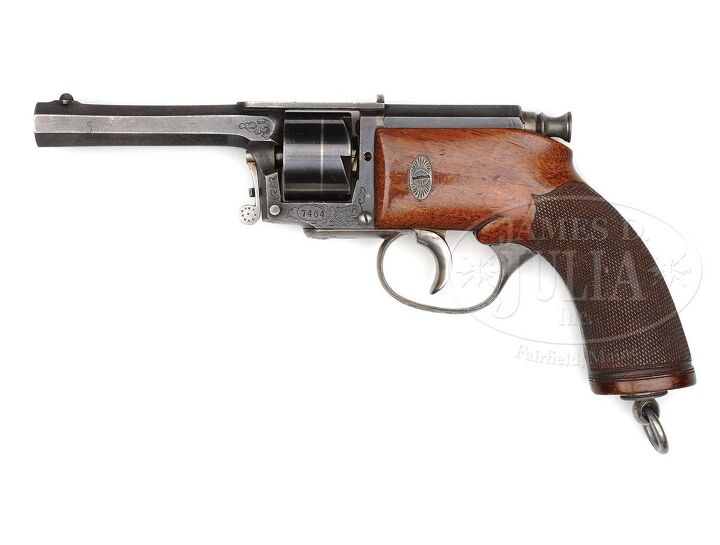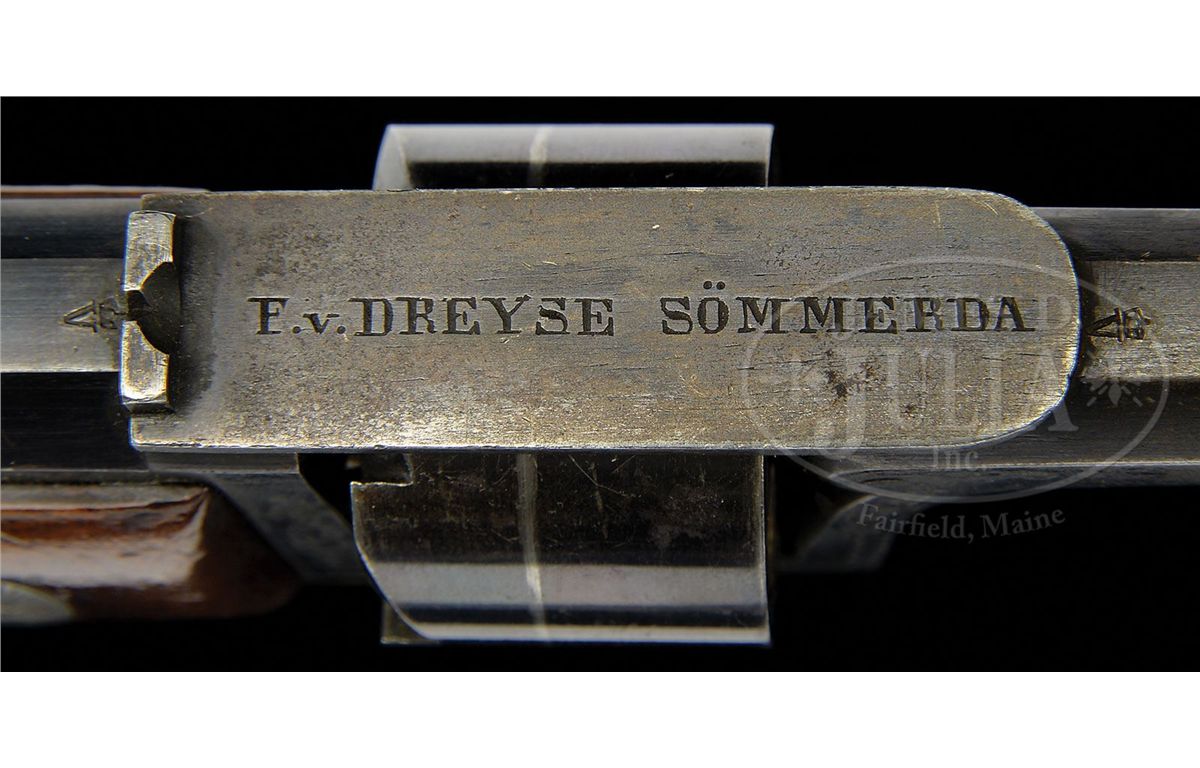In Victorian-era England (mid-1800’s, think Charles Dickens), many unique firearms were being invented. One of these was George Kufahl’s double action, striker-fired revolver, which had quite a unique form factor for that time (and for today!). Featuring a cylinder that had the firing chamber pretty much in line with the top of one’s firing hand, these revolvers were and are quite unique.
Though invented and patented in England, Kufahl eventually found a manufacturer interested in license production in Sömmerda, Germany. The firm of Johann Nikolaus (von) Dreyse embarked on production of this neat little revolver, offering it in needle-fire “Zoll” calibers 30, 35, and 39 (roughly equivalent to English calibers 32, 38, and 43).

Image Credit: James D. Julia Auctions
With a barrel and frame made from a single piece of iron, the Kufahl had a single-piece wooden stock with checkered grips. A welded-on top strap incorporated a rear notch sight, and the barrel had a drift-adjustable front sight. While the frame and barrel were blued, the trigger guard was case hardened.

Image Credit: James D Julia Auctions
How it works
To load the revolver, one would place a self-contained needle-fire cartridge into the chamber on the left side of the gun and press it back into place at the rear of the cylinder using a loading lever that hinged on a pin on the left side of the frame. The loading levers were typically carried separately from the gun, much like first-generation Tranters.
Pulling the very nicely radiused trigger would cause the hand to lock the cylinder in place, as well as cock and then release the striker, in this case, a needle. The needle would then ignite the priming compound at the base of the cartridge. Once the trigger was released, the needle and hand would retract and the cylinder would rotate.
One could also carry pre-charged cylinders, and perform a quick reload by removing the empty cylinder and replacing it with a loaded one. The cylinder axis pin could be removed by rotating it 90 degrees and pulling it forwards.

Image Credit: James D Julia Auctions
Adoption and Use, and The Kufahl Today
While not used by any militaries of the time, the Kufahl/Dreyse revolver was used by some police and Grenzer (border guard) units and was commercially popular. Production commenced in 1852 and continued until roughly 1880. Examples found today may have the frame and barrel in decent condition. The needles, however, are mostly missing, broken, or eroded away. This is due to the nature of needle-fire firearms, being that the needle is always in the middle of the cartridge combustion and therefore subject to quite a lot of wear.
The Dreyse firm went on to become part of Rheinmetall, Sömmerda’s other weapons manufacturer, which produced quite a lot of machine guns, autocannons, and other war materiel for Germany and continues to produce defense-related equipment today.
Overall, the Kufahl/Dreyse revolver was a bit ahead of its time, both in the form factor and striker-fired system. It shared a low bore axis with the Collier, Lang, and other early British revolvers. One can only hope that a modern manufacturer someday comes out with something similar using centerfire cartridges and modern cams to reduce the trigger pull necessary to operate such a system.
 Your Privacy Choices
Your Privacy Choices
